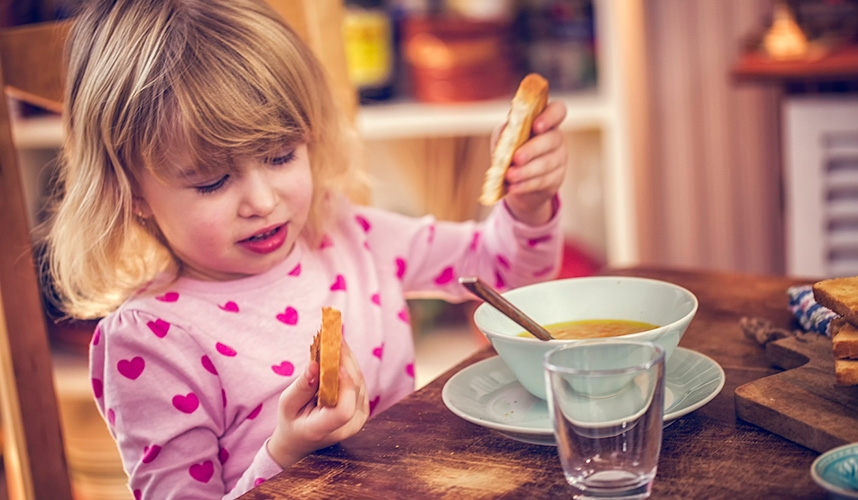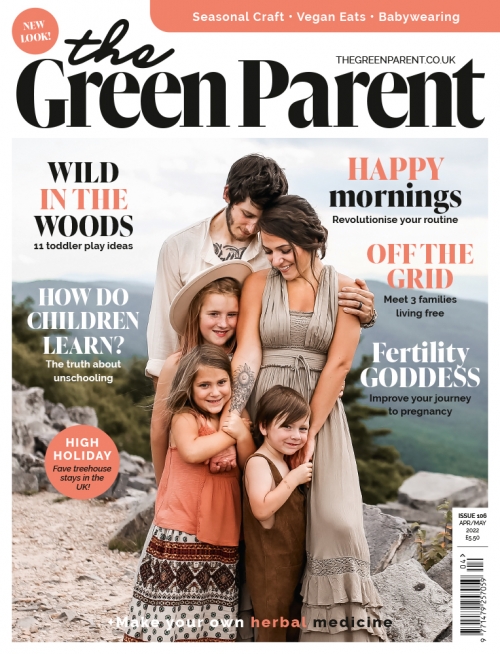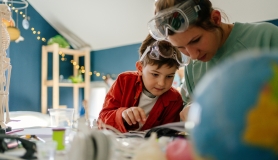The Bonsai Steiner Waldorf Kindergarten is housed in a beautiful thatched cottage that used to be a restaurant – close to forest, beaches and parklands – north of Copenhagen, Denmark. All year round we head out into nature and experience it with our senses. We cook over campfires, climb trees and forage for herbs.
At our kindergarten we have made the unusual choice of going vegetarian. Milk has also been taken off the menu, as has, more recently, sugar. Choosing a vegetarian diet has several benefits. Firstly, everyone eats the same food. Secondly by foregoing meat we save money, so we can afford the best produce and ingredients – and we can allow children several helpings if they are hungry.
Food has always played a central role at our kindergarten because nature, its rhythms and the importance of using our senses are so integral to Steiner-Waldorf philosophy. We use beetroots and red kuri squash for example in our songs, games and stories. Mealtimes hold so many opportunities for learning and development. Because it’s so fundamental, food becomes a natural meeting point. The kitchen is quite literally at the heart of our big house.
We use seasonal produce. When summer comes we play outside and need something light and refreshing like salads and strawberries. Our dietary and nutritional needs correspond to the changes in nature. Our bodies naturally need what each season offers.
Seasonal celebrations are an important part of the rhythm of the year. In August, children, parents and teachers take a trip to the biodynamic Krageberg farm, where the farmer lets us help with the harvest. We spend the rest of August threshing and grinding the grain that we bought back with us from the farm, so that we can bake our autumn bread. We also churn butter and make autumn wreaths from straw collected at the farm.
It’s fun to create your own seasonal traditions and festivals. In summer you might have a strawberry day, when you go strawberry picking, sing songs about and cook with strawberries. Autumn calls for an apple feast – for picking, chopping, gnawing, baking, drying and telling stories about apples.
‘You’ve always been able to get my child to eat beetroot soup. How do you do that? Even if I use the same recipe she won’t eat it.’ We get this response from some parents. Part of the explanation is that we have a number of mealtime rituals that encourage mindfulness. We sing a song before we eat. It takes peace and quiet to enjoy beetroot soup and children find familiar mealtime routines calming.
You can light a candle, sing a song and talk about the food before moving on to what everyone did that day. If there’s commotion, the TV is on or mum and dad talk continuously about their work children will want to leave the table and play. Children need calm and focus to eat well.
It’s a good idea to have fixed mealtimes – early ones if possible, before 6pm, when children’s digestion starts to slow down for the night. We must also resist running back and forth to get things for the table. We make sure water, glasses and everything else is already on the table when we sit down to eat. That way, there is no need to interrupt the flow of the meal; without interruptions the focus and attention remains firmly on the eating.
READ Rikke is the author of Pumpkin Soup and Cherry Bread: A Steiner-Waldorf Kindergarten Cookbook (by florisbooks.co.uk £14.99)







